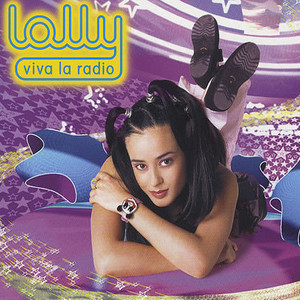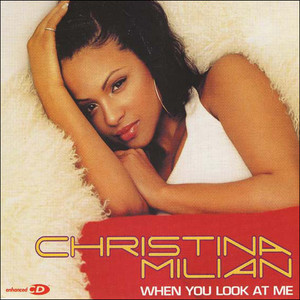Released: 28th June 1999
Writers: Dufflebag Boys
Peak position: #7
Chart run: 7-12-16-27-31-37-49-57-69
The history of Lolly – an act who burst onto the pop scene in 1999 – can be traced back two years earlier when the radio, an essential piece of technology reached a milestone birthday; a fact that was criminally overlooked by the music industry. The stage was thus set for Lolly to emerge as a historian and scholar in all things pop music to champion this humble, oft-overlooked device.
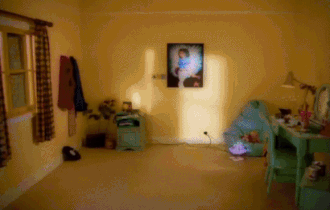
In 1997, the phenomenon of radio broadcasting had celebrated its 75th anniversary in the UK, but in a somewhat careless move, pop music forgot to commemorate this milestone. Two years later, that oversight was remedied with the launch of Lolly. She was a pop star whose mission was to make the charts accessible to all; her debut LP titled My First Album provided an unintimidating introduction to the complexities of pop music. As many inaccurately credited inspirational quotes tell us: you can’t know where you’re going until you know where you’ve come from. It made sense then that Lolly would open her career with Viva La Radio. Or, as it is otherwise known: a brief history of broadcast radio.

On the surface, the track is innocently disguised as a peppy, Latin-tinged ode from Lolly to her beloved radio. It’s a sensible approach because this is a perfect example of learning by subterfuge. Take, for example, an early lyric: “How I love my radio, I take it with me wherever I go”. It was a commentary on the popularity of the boombox in the ‘80s, but one that also acknowledged the rise of the Walkman in the ’90s. Indeed, the latter was becoming a preferred means of listening to music for the younger generation, and there was growing concern that this could be harming their hearing. Lolly is not unaware of these concerns, and she warns: “How I love to hear the sound, I like to play it nice and loud”. As anyone who accidentally switched to FM/AM radio on their Walkman during this time will attest, a sudden blast of static was indeed nice and loud (if not slightly deafening).
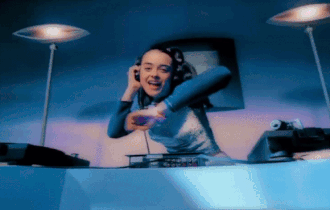
There’s a lot more to pop music than merely where you listen to it though, and Viva La Radio also explores more modern trends in how people listen to music: “How I wish I was a DJ, I’d play my favourite music every day”. Here we find Lolly discussing the growth and popularity of the mixtape, which allowed listeners to explore the theory of what it would be like to construct and broadcast their musical preferences via the airwaves. Indeed, she even has some ideas of her own: “Radio Lolly is what it would be, and you can come and dance and party with me”. This is one such example of Lolly anticipating the impact of technology upon pop music and future-proofing her work. iTunes, YouTube and Spotify playlists would all allow ‘Radio Lolly’ to exist with relative ease. So as a statement of intent now, it’s entirely achievable even if it seemed unlikely back in 1999.
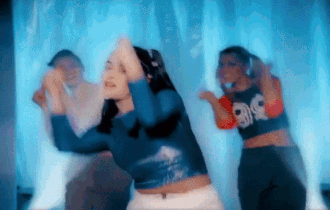
The pre-chorus is less educational and more instructional; an opportunity to put theory into practice if you will. Through a series of commands, Lolly encourages the student to experiment with the adjustable parameters of their broadcast device: “Radi-o-ooo, turn it up, turn it up; radi-o-ooo, louder, louder”, before finally attesting: “I love it, I love it”. One of the attributes most commonly associated with good teachers is a passion for their subject, and in this instance, it’s clear that Lolly has fallen into the right vocation. Having briefly surmised the benefits and opportunities associated with this wonderful device, it makes perfect sense that the chorus is the same celebratory proclamation repeated four times: “Viva viva viva la radio”. And if you’re not sure why, then maybe you need to re-sit the class.

Of course, Lolly does much more than just stand and lecture her students. She knows that visuals are a vital part of any lesson and the music video for Viva La Radio serves the song well. It does feature Lolly’s boombox, although we would suggest that in her eagerness for the topic, she operates it quite dangerously. As a general rule, if you are turning the dial on anything electrical and flashes of lightning emerge from it, you should put it down. Mercifully, Lolly doesn’t receive a devastating electric shock but instead shrinks and finds herself in a very purple bedroom. In this alternate universe, she can live out her dreams of being a DJ, performing choreography to her very own song and partaking in a massive pillow fight. The video culminates with Lolly posing inside a gigantic Polo before waking up and realising it was all a dream…or was it? As pop videos go, it’s a decent effort that nicely captures the critical elements of the song. As an educational resource…less so. Perhaps this is why the video remains mysteriously absent from YouTube.
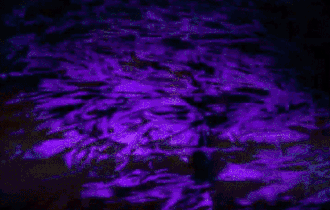
Viva La Radio, as it turns out, went on to become a reasonably big hit…although perhaps not as big as you might remember. Going by the chart that was published that week, the track debuted and peaked at #6. However, there was an error with missing sales data from Virgin and Our Price, and once that was added in, several singles changed position. It was agreed by the Official Charts Company not to publish the re-run chart at the time; however, their official archive has now been updated and Viva La Radio‘s peak revised to #7. Either way, a top ten hit wasn’t entirely unexpected. After all, Lolly had toured the country with Steps beforehand. At the same time, though, this was most definitely one of those songs that could so easily have failed to find an audience. And yet Lolly made it look so easy. Maybe mainstream chart domination had been her plan all along…

